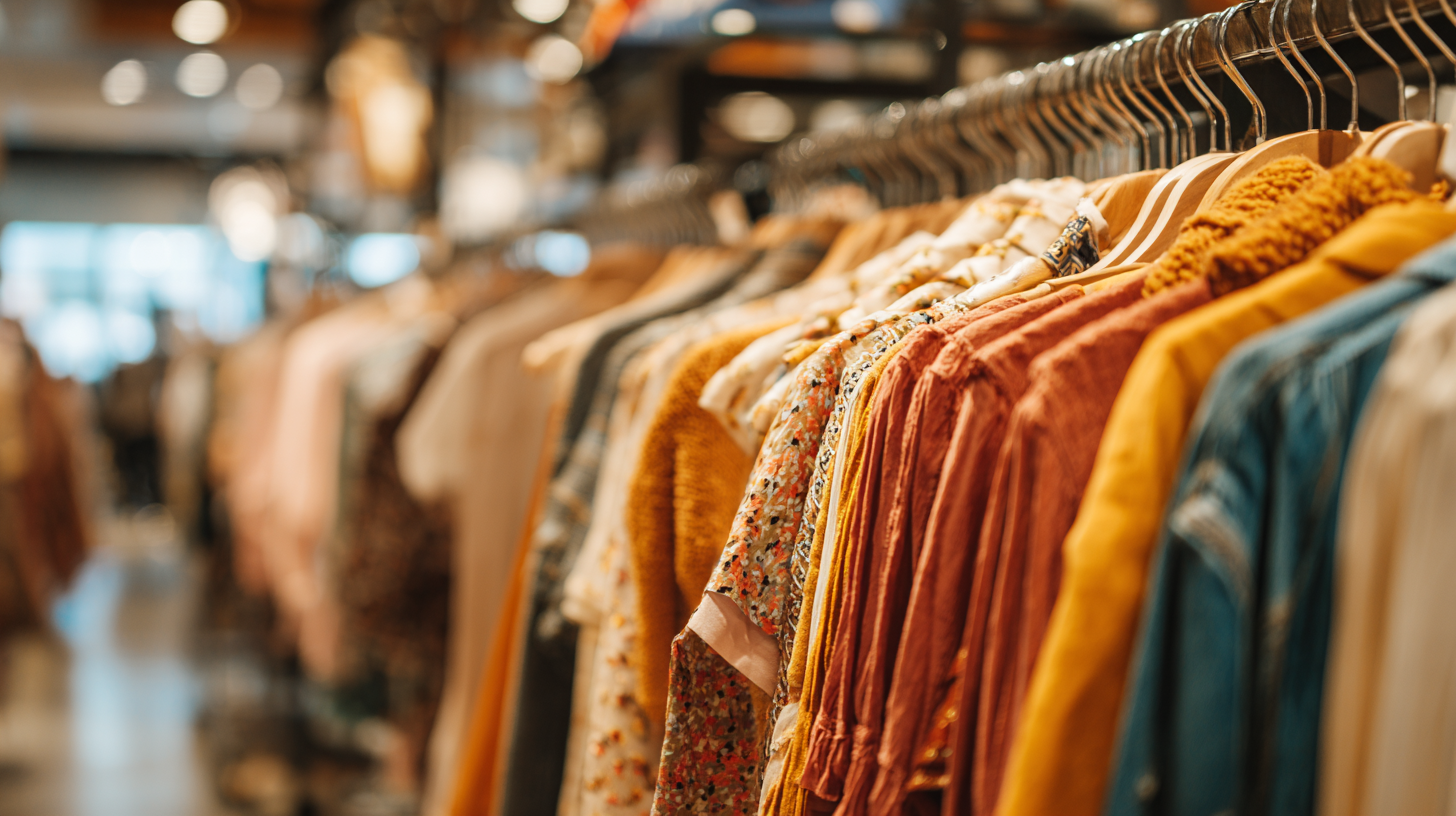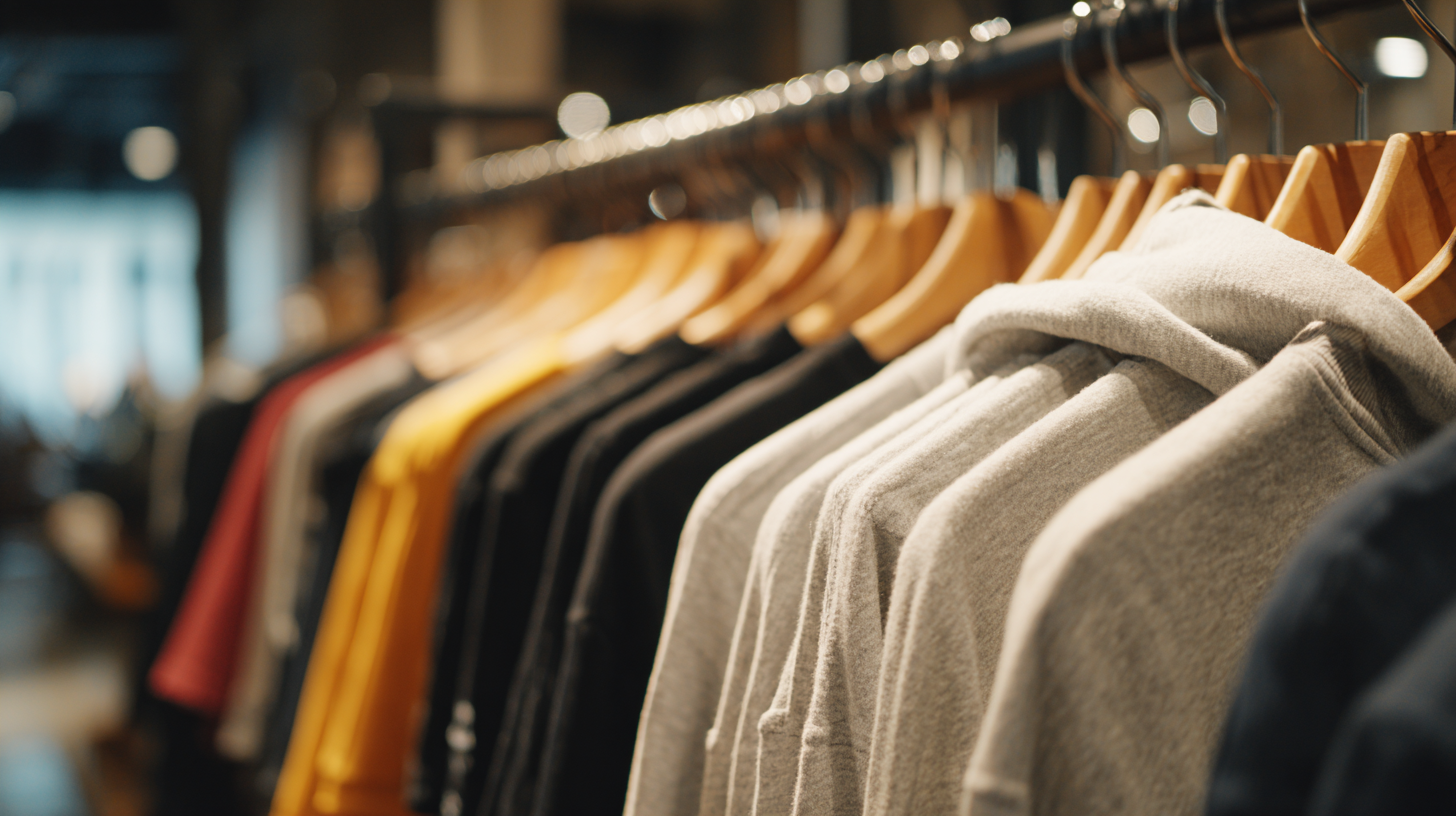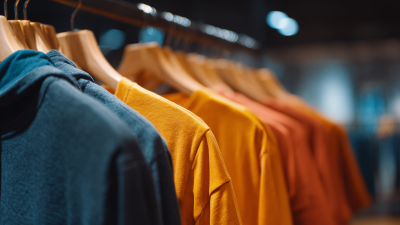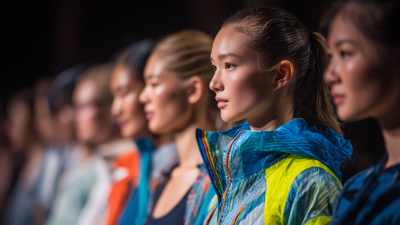Exploring the Evolution of Sustainable Fashion: A Guide for Online Clothing Shop Enthusiasts
In recent years, the fashion industry has witnessed a profound transformation towards sustainability, driven by both consumer demand and environmental necessity. As more individuals become environmentally conscious, online clothing shops are adapting to these changes by incorporating sustainable practices into their business models. This evolution is not merely a trend; it reflects a growing awareness of the impact that clothing production and consumption have on our planet. With numerous clothing websites now dedicated to offering eco-friendly options, enthusiasts have an unprecedented opportunity to explore and engage with sustainable fashion.

This guide aims to navigate the complexities of this evolving landscape, providing insights into the various types of sustainable fashion, the principles behind them, and how consumers can make informed choices while shopping online. By understanding the nuances of sustainable apparel, shoppers can contribute to a more responsible and ethical fashion industry, transforming their purchasing habits into a vehicle for positive change.
The Rise of Sustainable Fashion: Understanding Market Trends and Consumer Preferences
The rise of sustainable fashion is revolutionizing the clothing industry, reflecting a shift in consumer preferences towards eco-friendly practices. As more consumers prioritize environmental impact, the market for sustainable clothing is poised for significant growth, with projections estimating the custom apparel market to reach $59.9 billion by 2025 and skyrocketing to $124.5 billion by 2033. This anticipated growth rate of 9.56% highlights the increasing demand for garments that not only offer style and comfort but also align with ethical considerations.
In 2024, the women's apparel sector is anticipated to further evolve, showcasing a diverse range of demands centered around brand culture and personalization. As online shopping becomes increasingly convenient, women's fashion is expected to reflect these changing dynamics, catering to consumers' desires for unique and meaningful choices. The shift towards sustainable alternatives is not just a trend but a fundamental change in how consumers approach fashion, focusing on the heritage of materials, sustainability of production, and the longevity of products, which will undoubtedly shape the future of the industry.
Key Metrics: Analyzing the Growth of Eco-Friendly Fashion Brands in Recent Years
The growth of eco-friendly fashion brands has been a significant trend in recent years, with various key metrics highlighting the increasing consumer demand for sustainable practices. According to recent market research, the global sustainable fashion market is expected to reach several billion dollars by the end of the decade, driven by a growing awareness of environmental issues and ethical production methods. Consumers are more informed than ever, often seeking transparency in the brands they support, which has led to a surge in companies prioritizing eco-conscious materials and sustainable sourcing.
Another noteworthy metric is the rise in online searches for sustainable clothing, which has seen a dramatic increase as fashion enthusiasts turn to digital platforms for eco-friendly options. Brands that incorporate sustainable practices into their business models, such as using organic fabrics, reducing waste through upcycling, and promoting fair labor practices, are witnessing substantial growth in both customer loyalty and market share. Additionally, social media has played a crucial role in the popularity of these brands, as influencers and activists alike promote sustainable alternatives, creating a vibrant community centered around eco-conscious living and shopping. As a result, the fashion industry is gradually evolving, with more players entering the sustainable space and reshaping consumer expectations.
Exploring the Evolution of Sustainable Fashion: A Guide for Online Clothing Shop Enthusiasts
| Year | Number of Eco-Friendly Brands | Market Share (%) | Consumer Interest (% Increase) | Revenue Generated (in Billion $) |
|---|---|---|---|---|
| 2019 | 500 | 5 | 10 | 15 |
| 2020 | 600 | 6 | 20 | 18 |
| 2021 | 750 | 8 | 30 | 22 |
| 2022 | 850 | 10 | 35 | 25 |
| 2023 | 1000 | 12 | 40 | 30 |
The Impact of Digital Platforms on Sustainable Fashion Accessibility and Awareness
The rise of digital platforms has significantly transformed the landscape of sustainable fashion, making it more accessible to a broader audience. Online clothing shops are not merely retail spaces; they serve as vital hubs for promoting eco-friendly brands and practices. By utilizing social media marketing and influencer partnerships, these platforms enhance awareness around sustainable choices, allowing consumers to discover brands that prioritize ethical production and eco-friendly materials. This shift in accessibility is crucial as it empowers consumers to make informed purchasing decisions.

Furthermore, the global reach of digital commerce enables sustainable fashion brands from diverse backgrounds to share their stories and values, fostering a community centered on conscious consumption. Online marketplaces facilitate connections between designers and consumers who are eager to support ethical practices. This transparency not only educates shoppers about the environmental impact of their choices but also encourages brands to maintain high standards of sustainability to meet the expectations of increasingly environmentally conscious consumers. Thus, digital platforms play a pivotal role in shaping a more sustainable fashion ecosystem, bridging the gap between slow fashion and the fast-paced world of online shopping.
Tips for Online Shops: Sourcing Sustainable Materials and Ethical Production Practices
As online clothing shops increasingly cater to eco-conscious consumers, sourcing sustainable materials and adopting ethical production practices have become imperative. According to the Global Fashion Agenda’s 2021 report, the fashion industry produces over 92 million tons of waste annually, emphasizing the urgent need for sustainable practices. Online retailers can mitigate their environmental impact by prioritizing materials such as organic cotton, recycled polyester, and Tencel, which reduce resource consumption and promote circularity in fashion.

Moreover, ethical production practices can enhance brand reputation and consumer trust. A study by McKinsey & Company highlights that 66% of consumers are willing to pay more for sustainable brands. Online shops can ensure ethical production by partnering with certified factories that adhere to fair labor standards and environmental regulations. Transparency in sourcing and manufacturing processes not only aligns with consumer values but also cultivates loyalty among shoppers who prioritize sustainability. By implementing these strategies, online clothing shops can lead the charge towards a more sustainable and ethical fashion industry.
Marketing Strategies: Engaging Consumers with Transparency in Sustainable Fashion
In the realm of sustainable fashion, marketing strategies that emphasize transparency have become crucial in engaging consumers. According to a report by Nielsen, 73% of millennials are willing to pay more for sustainable products, demonstrating a significant shift towards conscious consumerism. Brands that openly communicate their sourcing processes, labor practices, and environmental impact can build trust and loyalty among eco-conscious shoppers. This transparency not only enhances brand reputation but also aligns with consumers’ increasing demand for brands to take responsibility for their practices.
Furthermore, a study from McKinsey & Company indicates that the sustainable fashion market could grow to $5.5 billion by 2025, highlighting the opportunity for online clothing shops to capitalize on this trend. By effectively utilizing platforms like social media to showcase their sustainability efforts, brands can foster an engaged community. For example, sharing behind-the-scenes content that illustrates ethical sourcing or the lifecycle of garments can personalize the brand experience. Ultimately, transparent marketing not only strengthens consumer relationships but also positions brands favorably in a competitive market that increasingly values sustainability.
Consumer Preferences in Sustainable Fashion
This chart illustrates the growing interest of consumers in various aspects of sustainable fashion over recent years, highlighting the importance of transparency, material source, and ethical labor practices.
Related Posts
-

The Future of Clothing Websites in the Era of Digital Transformation
-

How to Select the Best Clothing Shop for Your Global Sourcing Needs
-

Challenges Faced by Clothing Stores in Adapting to Consumer Trends
-

How to Build an Engaging Clothing Website That Attracts Customers
-

Discover the Future of Women's Sports Wear at China Import and Export Fair 2025: Trends and Insights
-

The Ultimate Ladies Swimming Costume Checklist for Perfect Summer Style

